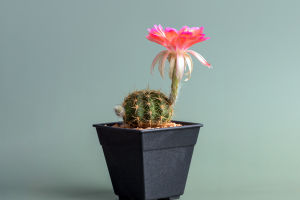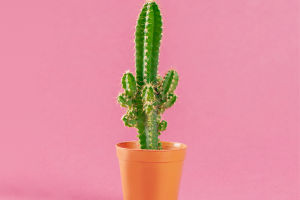Indoor plants are not only a wonderful addition to home décor but also bring a slice of nature into living spaces.
While they enhance aesthetics, purify the air, and add to the overall tranquility of an environment, many people wonder how these plants survive inside homes or offices, away from their natural outdoor conditions.
For indoor plants to thrive, several factors come into play—light, water, humidity, temperature, and nutrients. Let's explore how these factors are managed and how indoor plants adapt to artificial environments.
1. Light Adaptation
Light is one of the most crucial elements for indoor plants, as it is needed for photosynthesis, the process by which plants convert light into energy. Most indoor plants are selected for their ability to tolerate low or indirect light conditions. However, different plants have varying light needs, and understanding this is key to their survival.
- Low-Light Plants: Plants like Snake Plant (Sansevieria) and Pothos are examples of species that can tolerate minimal light. These plants have adapted to thrive in low-light environments by slowing down their growth and relying on stored energy reserves.
- Medium to Bright Light Plants: Spider plants, Peace Lilies, and Fiddle Leaf Fig prefer more bright, indirect light. Placing these plants near windows ensures they receive enough sunlight without being exposed to direct rays, which can cause leaf burn.
If natural light is scarce, artificial grow lights are a good alternative. Full-spectrum grow lights simulate the sun's rays and help indoor plants perform photosynthesis effectively.
2. Watering Needs
Water is essential for plant survival as it is involved in nutrient uptake, growth, and photosynthesis. One of the main challenges of keeping indoor plants alive is finding the balance between under-watering and over-watering.
- Under-watering: Many indoor plants are drought-tolerant, like succulents and cacti, which have evolved to survive on minimal water. These plants store water in their thick leaves, stems, or roots, allowing them to go for extended periods without watering.
- Over-watering: This is one of the leading causes of indoor plant death. Plants like ferns, which thrive in moist environments, require consistent watering but not waterlogged soil. The roots need oxygen, and waterlogged soil can suffocate them, leading to root rot.
To avoid over-watering, it’s essential to check the soil moisture regularly. Allowing the top inch of soil to dry out before watering again ensures the plant doesn’t sit in overly wet conditions.
3. Humidity and Temperature
Indoor plants often hail from tropical or subtropical regions, where humidity is high. Therefore, recreating that humidity level indoors can help plants like ferns, orchids, and peace lilies thrive.
- Humidity: Indoor air tends to be drier, especially in winter months when heating systems are in use. Plants adapt by slowing down their growth or shedding leaves. To boost humidity, misting plants, placing them in trays of pebbles filled with water, or using a humidifier can replicate the moisture levels of their natural habitat.
- Temperature: Most indoor plants prefer temperatures between 60°F and 75°F (15°C to 24°C). Extreme temperature changes, such as cold drafts from air conditioners or heat from radiators, can stress the plant. The key to survival is maintaining consistent temperatures throughout the day and night.
4. Soil and Nutrient Management
Soil is the medium through which indoor plants receive essential nutrients and water. However, indoor plants are typically grown in pots, meaning they rely on limited soil, unlike outdoor plants that can spread their roots extensively in search of nutrients. As the soil's nutrients deplete over time, plants require occasional feeding through fertilizers.
- Soil Type: Different indoor plants require different types of soil. Succulents and cacti need well-draining soil, while ferns and other moisture-loving plants prefer soil that retains more water.
- Fertilizers: Since indoor plants don’t get natural soil replenishment, using fertilizers is essential for their survival. A balanced, water-soluble fertilizer is recommended to supply the necessary macronutrients—nitrogen, phosphorus, and potassium. Fertilizing should be done sparingly, as over-fertilizing can cause salt buildup, leading to burnt roots.
5. Root Space and Pot Size
Indoor plants grow in containers, which limits their root expansion. The pot size and its drainage capacity play a crucial role in how the plant survives.
- Repotting: As plants grow, their roots may become pot-bound, meaning they have outgrown the space in their current pot. Regular repotting ensures the roots have enough room to expand, preventing stunted growth. Repotting also refreshes the soil, providing the plant with new nutrients and better drainage.
- Drainage: Good drainage is vital for indoor plants. Pots with drainage holes allow excess water to escape, preventing the plant's roots from sitting in water. Using a layer of pebbles or a tray beneath the pot can also help with this.
6. Air Quality and Ventilation
Indoor plants not only survive but also improve air quality by absorbing carbon dioxide and releasing oxygen. However, proper ventilation is necessary for them to breathe. Poor air circulation can lead to stagnant air, which encourages the growth of pests like spider mites and aphids.
Ensuring that indoor plants are placed in well-ventilated areas, away from dust and pollutants, helps them stay healthy. Occasionally dusting off the leaves or giving them a gentle wash can also improve their ability to photosynthesize efficiently.
Indoor plants have a remarkable ability to adapt to indoor environments, even though they are often far removed from their natural habitats. By understanding their specific light, water, humidity, temperature, and nutrient needs, you can create a thriving environment for them. Proper care and attention ensure that these plants not only survive but also flourish, bringing the calming beauty of nature into your home or office.


